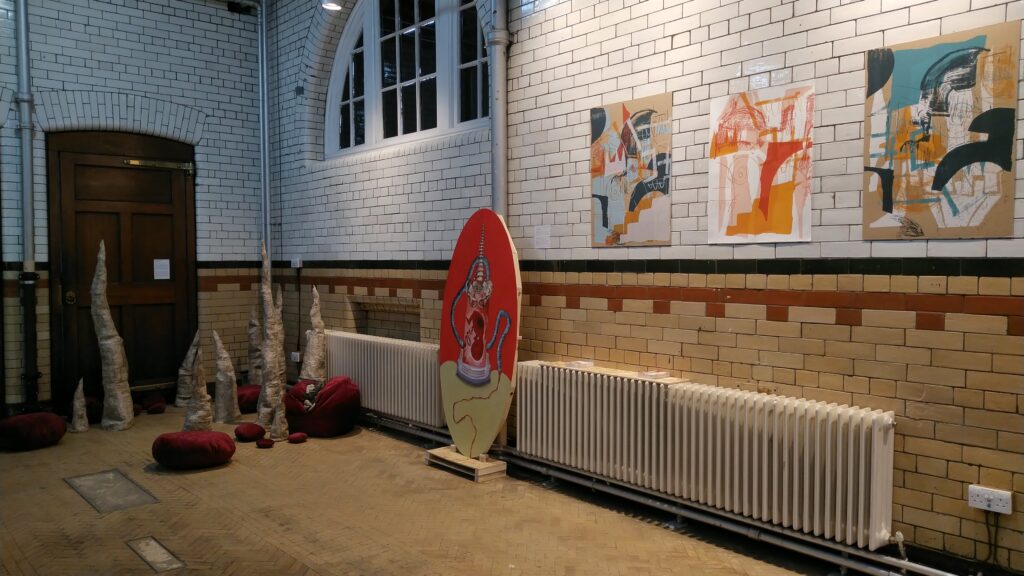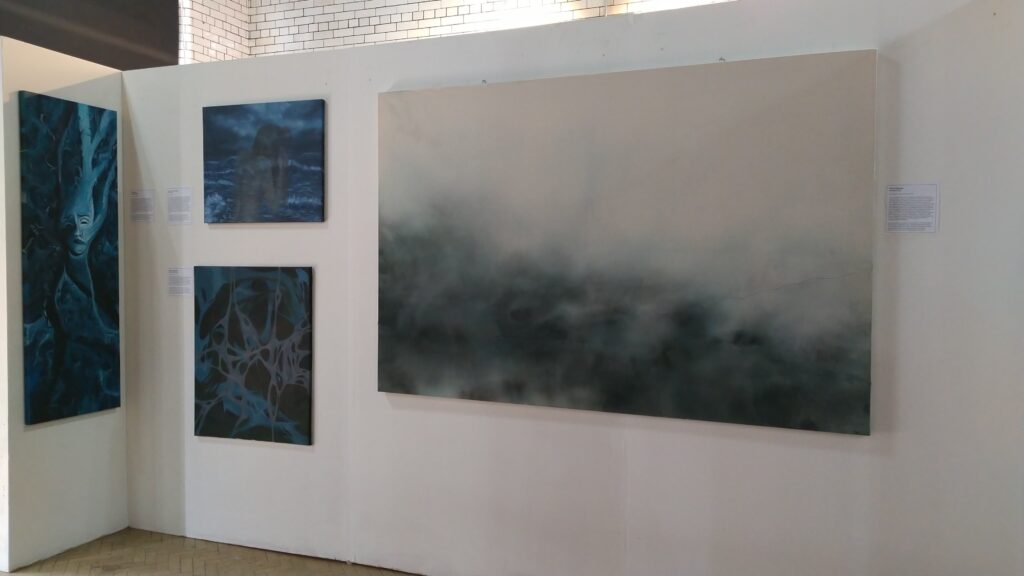Curatorial rationale
This exhibition brings together the works of three outstanding contemporary ink painting artists. Their works analyze the inheritance and transition of contemporary art into social change.
Ink painting needs to be reformed, and it must be reformed. Several generations of people since the 20th century have generally reached a consensus on this. Summarizing the opinions of various schools of thought on the reform of ink painting, there are no more than a few types. Some are within the tradition of literati painting to open up the present from the past, and some incorporate western realistic modeling, and enhance the ability of realism on the basis of maintaining the traditional taste of ink painting. There are also some that absorb western modernist artistic concepts and techniques, making ink painting abstract, symbolic and even conceptual. All these types of change are ultimately attributed to the attitude towards tradition, which is, using tradition as a resource or as an object of subversion.
The ideological background of contemporary ink painting contains some problems in terms of national motivation. The development of contemporary art has had a huge impact on any art discipline and genre, and the overall high degree of westernization has also allowed western visions and concepts to enter the eastern academic system. In the face of the impact of western culture, on the one hand, we believe that Chinese culture is backward, and we feel that we should follow and learn from the west. On the other hand, there was a strong psychological backlash, and there were worries about whether Chinese culture would be lost, and then we emphasized our own national characteristics in order to protect ourselves and resist.
Contemporary ink painting in the 1980s and 1990s seemed to coincide with such a contradictory national psychology. Initially, the ink medium allows us to connect with the spiritual continuation of traditional Chinese culture. Furthermore, returning to the medium allows us to let go to break through the existing boundaries and present the appearance of the new era. Therefore, contemporary ink painting can be regarded as a reasonable result under the background of such an era. It connects tradition at one end and modernity at the other end. Extracting certain factors from traditional works to strengthen, exaggerate and render, but without cutting off the lifeline between the two, this kind of reformism is very in line with the psychology and situation of our current society.
This exhibition brings together the excellent works of three contemporary ink painting artists. For one thing, it analyzes the inheritance, transition, reform and innovation that contemporary art faces in the ups and downs of social change. For another, it uses different perspectives of creative concepts to show the individual experience, education, thinking and language of the artists. The formal language of art is the carrier of spiritual demands. Their works not only retain the brush and ink spirit of ink painting, but also develop a new appearance in terms of charm, layout and form. In the historical process of ink painting from tradition to modernity, it has a significant meaning of inheritance and transformation.
Visit the exhibition and look at space in Fire Engin Station








After viewing Jing Ting’s blog, I would say that her curatorial project featuring the works of three contemporary ink painting artists offers an insight analysis of the inheritance, transition, reform, and innovation of contemporary art in the face of social change.
She will be showcasing the unique perspectives skillfully; also, the experiences, education, and creative concepts of the three artists are different and thus highlight the individuality of their works.
In Jing Ting’s rationale, she argues that ink painting needs and has to be reformed. This argument is rooted in the fact that several generations of people since the 20th century have generally reached a consensus on this issue. The various types of reforms that have been proposed can be attributed to the attitude towards tradition, which is either using tradition as a resource or as an object of subversion. She has done quite much research and even if the curation is not up yet, I believe that she’d do an excellent job of showcasing the ways in which the three artists have utilized tradition to develop their own unique style and form.
Jingting also raises the issue of national motivation in contemporary art. The high degree of westernization in contemporary art has allowed western visions and concepts to enter the eastern academic system. This has resulted in a psychological backlash in which there is a fear of losing Chinese culture, and an emphasis on national characteristics to protect against this loss. She has addressed this issue in her rationale by showcasing the ways in which the three artists have incorporated traditional Chinese culture into their work while also incorporating modern elements.
In terms of contemporary art theories, her curatorial project raises several issues. The first issue is the role of tradition in contemporary art. The three artists’ works chosen successfully utilise tradition to develop their own unique style and form. This is in line with the postmodern theory that emphasises the importance of the past in the development of contemporary art. The second issue is the role of the artist in contemporary art. The three artists featured in the curation have their unique individuality, experiences, education, and creative concepts demonstrated in their works. This is in line with the contemporary art theory that emphasises the importance of the artist’s personal experiences and perspectives in the development of their works.
Jing Ting is completed aware of the importance to address the individuality of each artist’s work and the significance of it in the context of social change.
Generally speaking, I think this looks like an outstanding curatorial project not only because the content is solid, but also refreshing to see traditional Chinese art form as it is not that often seen now because of westernisation.
I would be so looking forward to seeing Jing Ting’s curatorial project.